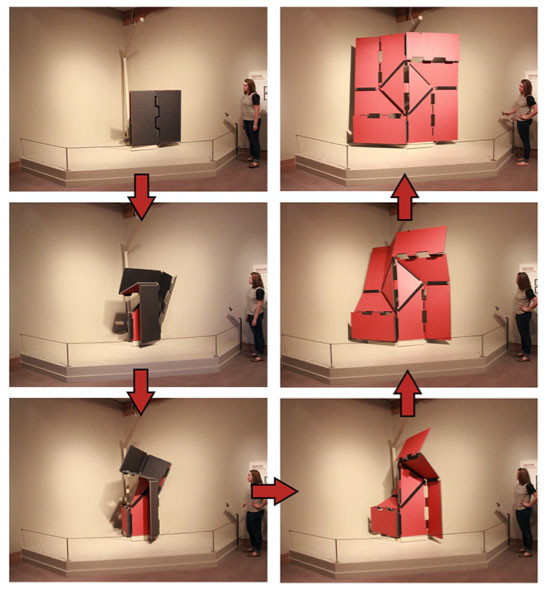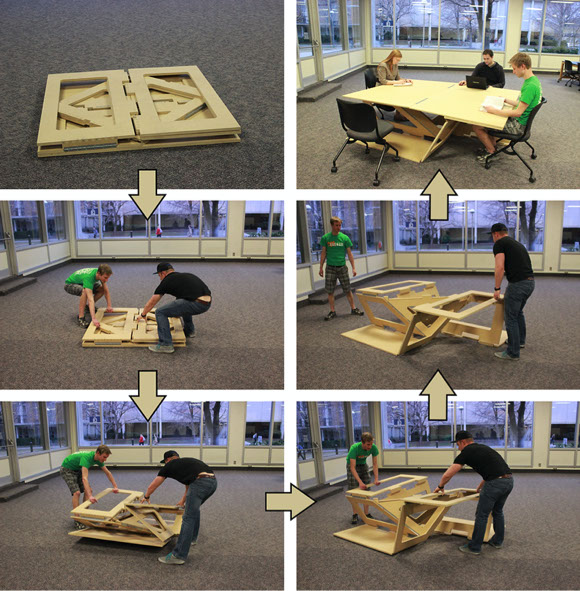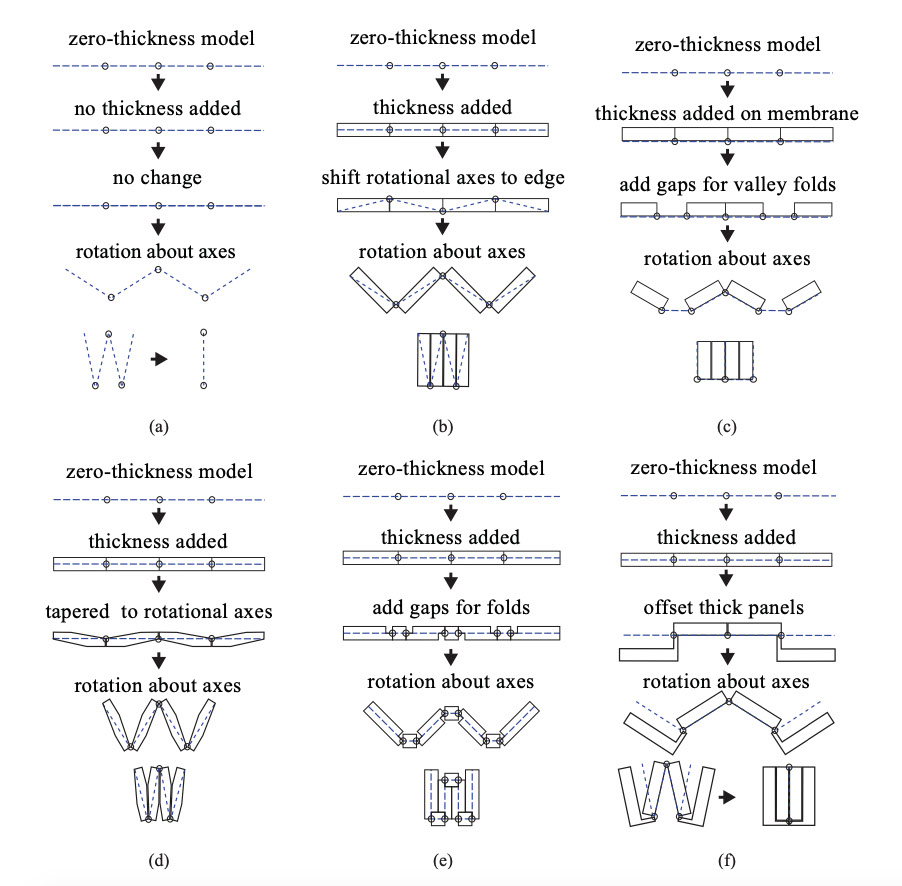DESN 120B — FUNDAMENTALS OF DESIGN II | SPR 2020 | T/TH 4:00–6:45PM | DSN121
Above. An illustration of the concepts of different thickness accommodation methods. All images, except (e), are from Edmondson et al. (2014). (a) The zero-thickness model describes the basic kinematic behavior of the model. (b) The axis-shift method as demonstrated by Tachi (2011) shifts each rotational axis to either the top or bottom of the thick material. While slightly different conceptually, the method described by Hoberman (2010) can be illustrated identically. (c) The membrane folds method by Zirbel et al. (2013) mounts thick-material facets to a flexible membrane. (d) The tapered panels method from Tachi (2011) trims material from the panel edges to maintain the kinematics. (e) The offset crease technique, described by Abel et al. (2015), is similar to the membrane folds method, but calls for rigid material in the gaps between panels. This method was inspired by work done by Hoberman (1991) (f) The offset panel technique shown by Edmondson et al. (2014) offsets each panel from a selected joint plane and extends the rotational axes back to the joint plane. From Towards Developing Product Applications of Thick Origami Using the OPT

Above. The unfolding of an origami-based kinetic sculpture which employs the OPT. The mechanism is made of panels with a thickness of one inch. This was part of an exhibit in BYU’s Museum of Art. From Towards Developing Product Applications of Thick Origami Using the OPT

Notice large surface areas are "knocked out" to save weight, adds more visual interest as well.
Above. An origami-inspired table is shown through its opening motion. This origami-based table supports a significant amount of weight. Unlike the other examples in this paper, the table is designed to unfold to an intermediate position that does not correspond to the zero-thickness model’s fully unfolded position. The panels in this design are 0.75 inches. From Towards Developing Product Applications of Thick Origami Using the OPT
STUDENT EXAMPLES
to come
STUDENT LEARNING OBJECTIVES (SLOs)
Upon successful completion of this assignment, students will:
- Demonstrate attention to craft,
- Demonstrate understanding of systems,
- Gain understanding of a methodology which has scalability,
- To develop hand-making skills and techniques commonly used in
Industrial Design, Interior Design, and related Design Practices, - To develop an understanding of culturally defined standards of quality.
GRADING AND EVALUATION RUBRIC
Student's learning will be developed through the exploration of mixed media, collage, drawing and compositional techniques.
Assessment is determined based on one-on-one feedback, and through student verbal presentation of their concepts and work-product.
The following Rubric will apply in assessment of the student's work product, presentation, and/or process:
^
* Estimate only. See instructor and calendar for specific due dates. Summer Session schedule is more compressed with one week equal to approximately two and half semester weeks.
CSULB | COTA | DEPARTMENT OF DESIGN | BIO

Questions, feedback, suggestions?
Email me with your recommendations.
©2020 Michael LaForte / Studio LaForte, All Rights Reserved. This site and all work shown here is purely for educational purposes only. Where ever possible student work has been used or original works by Michael LaForte.
Works by professionals found online or in publication are used as instructional aids in student understanding and growth and is credited everywhere possible.
